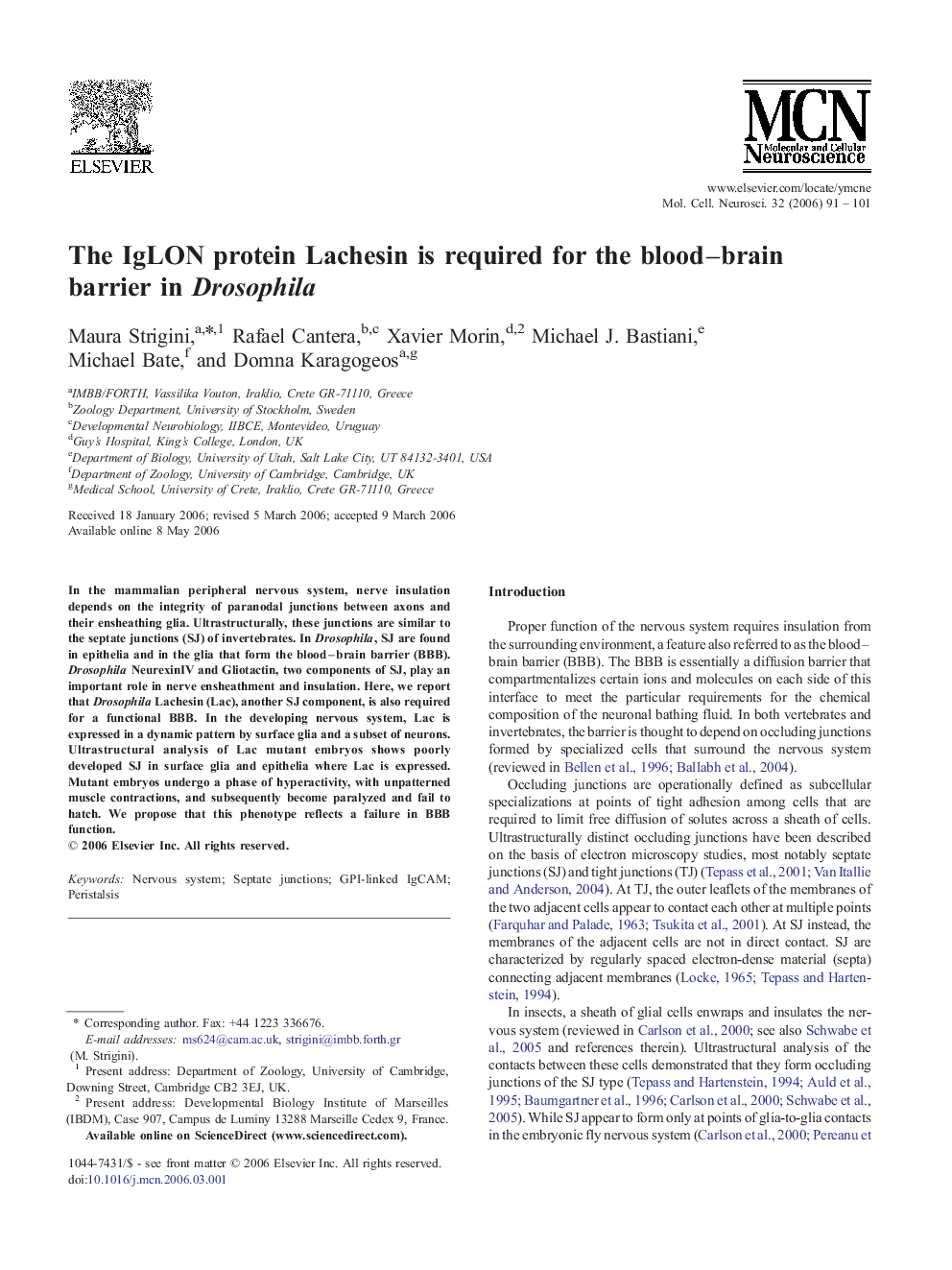| Article ID | Journal | Published Year | Pages | File Type |
|---|---|---|---|---|
| 2199424 | Molecular and Cellular Neuroscience | 2006 | 11 Pages |
In the mammalian peripheral nervous system, nerve insulation depends on the integrity of paranodal junctions between axons and their ensheathing glia. Ultrastructurally, these junctions are similar to the septate junctions (SJ) of invertebrates. In Drosophila, SJ are found in epithelia and in the glia that form the blood–brain barrier (BBB). Drosophila NeurexinIV and Gliotactin, two components of SJ, play an important role in nerve ensheathment and insulation. Here, we report that Drosophila Lachesin (Lac), another SJ component, is also required for a functional BBB. In the developing nervous system, Lac is expressed in a dynamic pattern by surface glia and a subset of neurons. Ultrastructural analysis of Lac mutant embryos shows poorly developed SJ in surface glia and epithelia where Lac is expressed. Mutant embryos undergo a phase of hyperactivity, with unpatterned muscle contractions, and subsequently become paralyzed and fail to hatch. We propose that this phenotype reflects a failure in BBB function.
